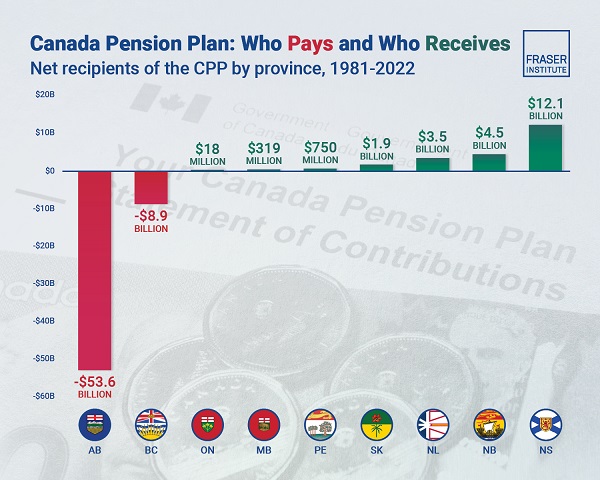Also Interesting
Understanding the Odds when Sports Betting in Canada

When it comes to sports betting in Canada, there are a few things you need to understand to be successful. First and foremost, you need to know the odds. The odds are the most crucial factor in sports betting, as they will determine how much you can win or lose on any given bet. You can also learn about comprehensive Ontario sports betting sites and pick the best platforms to start your sports betting journey.
There are two types of odds in sports betting: decimal and fractional. Decimal odds are the most common type of odds used in Canada, and they represent the amount of money you will receive for every $1 you bet. For example, if the decimal odds are 2.00, you will receive $2 for every $1 you bet.
On the other hand, Fractional odds represent the amount of money you will win for every $100 you bet. So, if the fractional odds are 3/1, you will win $300 for every $100 you bet.
It is important to note that the higher the odds, the more risk is involved in the bet. This means that while you can win more money by betting on high-odds games, there is also a greater chance that you will lose your entire stake.
Sports Betting in Canada – An Overview
Sports betting is a popular activity in Canada, with many people enjoying the chance to place a wager on their favorite teams and athletes. However, there are some essential things to remember before getting started with sports betting in Canada.
First and foremost, it’s important to remember that sports betting is a form of gambling. This means there is always the potential to lose money when placing a bet. As such, it’s essential only to bet what you can afford to lose.
It’s also important to know the different types of bets available. The most common type of bet is the straight bet, which involves picking who you think will win or lose a particular game or event. However, there are also more complex bets, such as parlays and props.
When placing a bet, it’s also essential to consider the odds. The odds represent the likelihood of a particular outcome occurring and can be expressed as fractions (e.g., 1/2) or decimals (e.g., 2). The higher the odds, the less likely work is to occur, but this also means that there is more potential for profit if the product does occur.
Finally, it’s worth noting that provincial governments in Canada regulate sports betting. This means that each province has rules and regulations regarding sports betting. As such, it’s essential to familiarize yourself with the regulations in your area before placing any bets.
The Different Types of Sports Betting Available in Canada
There are many different types of sports betting available in Canada. The most common type is the single bet, which is a bet on one particular game or event. This can be a bet on the game’s outcome, the point spread, or the money line.
Another common type of sports bet is the parlay, which is a bet on two or more games or events. The payout for a parlay is usually much higher than for a single bet, but the odds of winning are also much lower.
The third type of sports bet is the teaser, similar to a parlay but with reduced odds. Teasers are often used in football betting and can be very profitable if done correctly.
Finally, there are also prop bets, which are bets on specific events that may occur during a game. These can be anything from who will score the first touchdown to how many yards a particular player will gain.
What is the best strategy for Sports Betting in Canada?
There is no one-size-fits-all answer to this question, as the best strategy for sports betting in Canada will vary depending on your individual goals and preferences. However, a few general tips can help you increase your chances of success when betting on sports.
First, it is essential to do your research before placing any bets. This means taking the time to learn about the teams and players involved in the game and the specific rules and regulations of the sport. The more information you have, the better equipped you will be to make informed decisions about your bets.
It is also essential to set a budget for your sports betting activities and stick to it. This will help you avoid chasing losses and getting into financial trouble. Only bet what you can afford to lose, and be prepared to walk away if things are not going your way.
Finally, using a reputable and trustworthy sports betting site is always a good idea. This will help ensure that your personal and financial information is safe and secure and that you are getting the best possible odds on your bets.
The Benefits of Sports Betting in Canada
There are many benefits to sports betting in Canada. For one, it can be a great way to earn profit while watching your favorite game. With the correct picks, you can win big and walk away with a nice profit.
Another benefit of sports betting is that it adds excitement to watching sports. If you have money riding on the outcome of a game, you’re sure to be more invested in the action. This can make games more enjoyable to watch, even if your team isn’t playing.
Finally, sports betting can be a great way to socialize. If you bet with friends, you can enjoy friendly competition and banter. This can make watching sports even more fun.
What bonuses and promotions are available for Canadian sports bettors?
There are a few different bonuses and promotions available for Canadian sports bettors. One popular bonus is the sign-up bonus, which is usually a match-up to a certain amount on your first deposit.
Another standard bonus is the reload bonus, which gives you a percentage back on subsequent deposits. There are also often promotions for specific events or games, such as enhanced odds or money back if your team loses by a certain margin.
Odds are the return you can expect on your bet based on the probability of an event occurring.
Also Interesting
The bizarre story of Taro Tsujimoto

The National Hockey League (NHL) has seen its fair share of strange moments, but few compare to the bizarre and hilarious tale of Taro Tsujimoto, a player who never existed. His “selection” in the 1974 NHL Draft remains one of the most legendary pranks in hockey history. If you want to wager on actual players, making the 1xBet app download is definitely a great idea.
In the 1970s, the NHL Draft was a much less glamorous event than today. It was a tedious process conducted over the phone, with teams calling in their picks. The 3 biggest highlights of what happened during that year’s draft were:
- the draft dragged on for hours;
- there were multiple rounds and teams selecting unknown prospects from obscure leagues;
- frustrated with the monotony, Buffalo Sabres general manager Punch Imlach decided to have a little fun.
As the 11th round approached, Imlach instructed his team’s representative to draft Taro Tsujimoto, a supposed forward from the Tokyo Katanas of the Japan Ice Hockey League. The name sounded authentic enough. The league officials, unfamiliar with Japanese hockey, accepted the pick without question. By downloading the 1xBet app you will also be able to wager on great NHL teams too.
A small problem
There was a small problem with all of this, as 2 things didn’t exist: Tsujimoto and the Tokyo Katanas. Imlach had completely fabricated the player as a joke, taking advantage of the NHL’s lack of verification. When it comes to NHL wagers, there is no better platform than the 1xBet Canada site.
For weeks, the league listed Tsujimoto as an official draft pick, and even some newspapers reported on Buffalo’s mysterious new Japanese prospect. Eventually, the Sabres admitted the hoax, and the NHL was forced to retroactively erase the selection from its records.
Despite being a fictional player, Taro Tsujimoto took on a life of his own. Buffalo Sabres fans embraced the prank, and over the years, his name has become a cult legend in hockey culture. Some fans even wore jerseys with “Tsujimoto” on the back. The joke persisted so much that when EA Sports released NHL video games, players could occasionally find Tsujimoto in the game’s draft pool as a hidden Easter egg.
More than just a prank, the story of Taro Tsujimoto highlights 2 things: the quirks of old-school sports management and the creativity of one of hockey’s most colorful executives. Today, with the draft process being highly scrutinized and broadcast live, such a prank would be impossible. But Tsujimoto’s legacy lives on as one of hockey’s greatest inside jokes. What is not a joke are the great rewards that a platform like the Canadian 1xBet site can give you.
Also Interesting
60% of Canadians gamble each month – why the industry is going from strength to strength

When it comes to regulating gambling, Canada has a somewhat relaxed approach. The Canadian Gaming Association oversees the industry, but it’s up to individual provinces to enact and enforce any laws relating to online casino gaming, sports betting, traditional casino gaming, and other forms of gambling.
Canada’s online casino gaming laws are not totally clear, but individual provinces are starting to put this right. Ontario was the first and did so when it launched its own regulated igaming market in April 2022. Now some other provinces have followed suit, creating a safer igaming environment for players in those provinces. Below is a look at gambling in Canada compared to other parts of the world, at gaming laws in Alberta compared to other provinces, and at the future of the Canadian, US, and UK gambling industries.
Canada: a forever love of gambling
Gambling in some form or other has always been popular in Canada. Way back in the 1990s, research found six in ten Canadians (60%) gambled every month. Additionally, four in ten (43%) spent between 1 and 20 Canadian dollars on gambling. Fast forward to today and the Canadian gambling market is worth 14.2 billion US dollars as of January 2024, according to data on the website of consumer and market data company Statista.
It seems Canada enjoys wagering just as much as two other countries that love a gamble: the US and the UK. Data on the Statista website shows that 49% of US adults took part in gambling activities in 2023. Fifty-six percent said their attitude towards gambling had relaxed, compared to the 50% of 2019.
The UK returned similar stats for the same year. Forty-eight percent of adults reported engaging in gambling activity. Online casinos generated the most gross gambling yield in 2023, but it was the nation’s National Lottery that people played the most.

Alberta: following Ontario’s lead
The regulatory developments in Ontario have triggered movement in Alberta. In May 2024, Bill 16, the Red Tape Reduction Amendment Act, made it through the process and later received Royal Assent to become law. The act removes the monopoly of gaming by a single government entity and will allow private operators, licensed by Alberta’s provincial regulator, to provide online gaming services in Alberta, meaning players will have a choice of more than one Alberta online casino to play at.
The regulation transforms Alberta into one of the more liberal provinces when it comes to online gambling, others being Quebec, Ontario, and British Columbia.
Several provinces, such as Novia Scotia and Northwest Territories, have no provincially regulated online gaming sites. Some also restrict betting on horse racing and/or other types of sports betting, obliging citizens to use international betting sites for freedom from caps and betting on as many events as they wish.

What lies ahead for the Canadian, US, and UK gambling industries?
Canada’s appetite for gambling is clear, and the industry’s online sector is beginning to thrive. Ontario has enjoyed vast success by creating its own regulated market, one which, in just its first year, saw Canadians place billions in wagers and the industry itself generate more than a billion in total gaming revenue.
Canada can expect to see other provinces follow Ontario’s lead and allow private operators to provide services in the province under license. The purpose of the regulation is player protection. Any province that develops a regulated market will focus on this, so there will also be regulations around the advertising of gambling services.
The US
Gambling online is the future for the US, too, although states are slow to legalize it. As of September 2024, 38 states had legalized sports betting, following the US Supreme Court’s ruling that states could regulate sports gambling directly.
Despite allowing sports betting, some states only permit in-person betting, and only a few states allow online casino gaming. Operators believe online casino gaming is the future of gambling.
The UK
In the UK, the use of artificial intelligence (AI) will get bigger and bigger. Companies have realized AI can enhance players’ experience and are embracing it more and more. For instance, sports betting websites can use it to crunch data and provide iGamers with stats and other data to make better betting decisions. They’re also understanding they can use AI to prioritize content players are likely to be interested in and to personalize their offerings and services to players’ preferences.
Canada enjoys gambling as much as America and the UK. Although laws around igaming are more of a grey area in Canada, some provinces are clearing the issue up by creating regulated markets and experiencing great success. As time goes by, more are sure to follow.
-

 Alberta2 days ago
Alberta2 days agoAlberta Institute urging Premier Smith to follow Saskatchewan and drop Industrial Carbon Tax
-

 Addictions2 days ago
Addictions2 days agoShould fentanyl dealers face manslaughter charges for fatal overdoses?
-

 Also Interesting1 day ago
Also Interesting1 day agoThe bizarre story of Taro Tsujimoto
-

 Alberta2 days ago
Alberta2 days agoAlbertans have contributed $53.6 billion to the retirement of Canadians in other provinces
-

 2025 Federal Election2 days ago
2025 Federal Election2 days agoChinese Gangs Dominate Canada: Why Will Voters Give Liberals Another Term?
-

 Health1 day ago
Health1 day agoRFK Jr. Drops Stunning Vaccine Announcement
-

 Energy2 days ago
Energy2 days agoEnergy, climate, and economics — A smarter path for Canada
-

 2025 Federal Election23 hours ago
2025 Federal Election23 hours agoSoaked, Angry, and Awake: What We Saw at Pierre Poilievre’s Surrey Rally





